|
Invited speakers
|
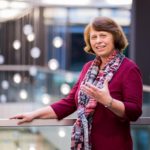
|
Ewine van Dishoeck
Leiden Observatory, the Netherlands.
IAU, President (2018-2021).

«Opening Ceremony«
In this welcome talk, a brief overview of the IAU and its Offices will be given, with emphasis on where education and heritage fit into the IAU structures and its Strategic Plan.
|
|
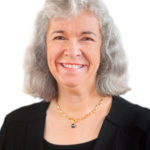
|
Debra Elmegreen
IAU, President-elect (2021-2024).

«Closing Remarks«
|
|
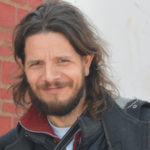
|
Alejandro López
UBA, Argentina.

«Cultural Astronomy. A scientific frame to understand academic astronomy as part of the Social World«
In the past, Western academic astronomy has been a discipline that has conceived in a very specific way the scope of its interests. But, in recent decades there has been a promising openness to the rest of the society, in the context of areas such as education, heritage and outreach. The IAU 2020 and 2030 Strategic Plans have reflected that opening movement. Despite this, as I have indicated in previous works (López2016, 2018a, 2018b), there has not been an adequate scientific approach that accompanies this opening, which would imply taking into account and incorporating the knowledge of the social sciences. In fact, it is not just about including this knowledge, but also about building a truly interdisciplinary perspective that incorporates them and combines them with academic astronomical knowledge . . . text complete
|
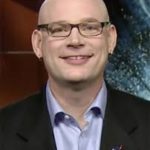 |
Alex Young
Associate Director for Science Heliophysics Science Division, NASA GSFC.

«Engaging the Public through Solar Eclipses, 2017 and Beyond: A NASA Perspective«.
The August 21st 2017 Total Solar Eclipse public engagement program was arguably the largest, most complex, most inclusive, and most impactful education program ever achieved by NASA. This was the first total solar eclipse to cross the continental United States since 1979 and the first one to cross from coast to coast since 1918. NASA worked with a broad set of organizations as well as states and cities to help support and promote events across the country before and during the event. It was much more than an event though, it was an opportunity to engage over two billion people in the United States and throughout the world with rich STEM educational content, vivid imagery, safety messages, and citizen science opportunities. This amazing spectacle of nature is not the only such opportunity for the hemisphere. A total solar eclipse cross edChile and Argentina in July 2019 and will do so again in December 2020. Then the United States will have another chance to experience this in April 2024. With all the eclipse excitement in North and South America over a relatively short period of time, the public continues to hunger for more. NASA hopes to again help again, excite and inform the world of the next opportunity for the sun’s corona to shine.
|
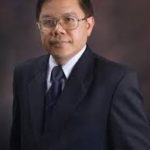 |
Boonrucksar Soonthornthum
NARIT.

«Astronomy Education in the Era of Digital Transformation Strategies on«
Astronomy Education is one of the major key roles in the IAU strategic plans to promote teaching and education in Astronomy across the globe. As we proceed to the digital transformation era, big data in astronomy becomes much more generic. Nowadays, the astronomical data archives are impressively large and the “digital age” has made it easy to make the data available to astronomers, researchers and even to publics. Big data in Astronomy plays an important role in Astronomy Education both in higher education and school education. Astronomers and researchers can access “big data” for the “Deep Learning” on their research works and school students and publics and also access to astronomical data and information for strengthen and promoting “Science Literacy” in the community.
|
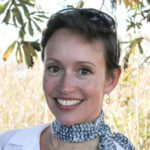 |
Carolina Ödman
Inter-University Institute for Data Intensive Astronomy (IDIA), University of the Western Cape (UWC), South Africa.

«Development and Outreach«
Astronomy has been explored as an instrument for development for over a decade now. Many lessons have been learnt. Using astronomy as a source of inspiration, education has been the most prolific means through which astronomy has contributed to development. But there have also been many innovations outside of education. It turns out that most such new ideas have emerged a the interface between astronomy and other fields, demonstrating the power of inter-disciplinarity and that progress does not take place in isolation.
Information technologies have become the connective tissue of today’s world, and even more so since COVID-19. We now travel a lot less. We have seen how misleading and false information spreads faster than knowledge. The algorithms that automate our social feeds have demonstrated their biases. Unfortunately these dont remain in the virtual world. Misinformation comes with very dire real world consequences, and structural bias is a very real barrier to inclusion. Looking to the future, what heritage are we building for the next generation? And what role does astronomy have to play in it?
In this talk, I will review some of the most innovative ideas that have come out of the «Astronomy for Development» movement, and explore the legacy of those projects. I will also discuss the meaning of the term heritage in a fully digital, interconnected and post-truth world, and the role astronomy and astronomers can take on to contribute to a better world.
|
|
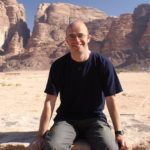
|
César González-García
Instituto de Ciencias del Patrimonio (Incipit), CSIC, Spain.

«Our Sky, the Sky of Our Ancestors«
When we talk about Astronomy, we normally do not take into account that we are using a cultural specific way of understanding the sky. Astronomers, either professional, amateur or just lovers of the sky nowadays tend to approach the sky from the point of view of modern science. There, we approach the sky as something that needs to be explored, understood and explained.
However, this vision was not always like that, or even in other cultures is/was completely different. For centuries, the human being has comprehended the sky, its changes and constancies, as part of their world, as part of the environment, as part of their everyday life.
In this talk, I will review a few of these different ways of approaching the sky in several cultures, from the Near East to Rome or the Andes and how we can use them today for education, outreach and heritage management.
|
|
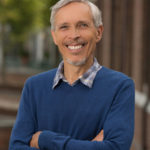
|
Chris Impey
Department of Astronomy, University of Arizona.

«Online Resources for Astronomy Education and Outreach«
The Internet has become an indispensable resource for aiding in the teaching of astronomy, even more so during a pandemic when so many classes are online, and for sharing the beauty of the subject with large public audiences. This overview will highlight the best of the free and open access resources. For teaching, there are online textbooks, lab activities, videos, sky-viewing tools, and interactive simulations. Outreach is served by image collections, citizen science projects, short videos, and podcasts. Several cutting-edge uses of technology are described: 3D and virtual worlds, and an AI-driven question-answering tool.
|
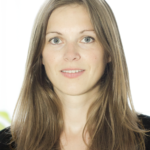 |
Edith Hammer
UNESCO Institute for Lifelong Learning.

«Embracing a culture of lifelong learning«
This presentation will provide an introduction to the concept of lifelong learning, exploring its relevance and potential for future human development. Lifelong learning – comprising learning in formal education, in non-formal contexts and informal ways – plays an increasingly important role within society and also within the higher education sector. Universities have a social responsibility towards society, conducting research that benefits society, making research results widely and openly available, communicating research to the wider community, and providing learning opportuntities for people of all ages and social backgrounds.
Increasingly, the global community acknowledges that lifelong learning – available to all, at every stage and in every sphere of people’s lives – is key to addressing the multiple challenges faced by humanity. Lifelong learning fosters people’s capacity to deal with change and to build the future they want. This is profoundly important given the disruption and uncertainly resulting from the familiar threats and opportunities of demographic change, the climate crisis, the rapid advance of technology and, more recently, the COVID-19 pandemic. In such uncertain times, new ways of learning provision have to be found.
Learner autonomy is the foundation of this lifelong learning culture. Learning to learn has become a basic competence, as has managing one’s own learning journey and creating one’s own learning biography. Understanding all levels of learning as learner-centric presents a crucial shift to fundamentally thinking and planning education with demand in mind. This way, learners are active agents rather than passive recipients of prescribed knowledge. They co-design and use any learning process and its outcomes actively to realize their potential as fully as possible.
Learning is understood as a collective process, taking place among peer groups, within communities and across generations. Education emphasizes becoming global citizens who care about each other, other communities and the planet. Consequently, lifelong learning is for all, and learning opportunities can be created for and with the most excluded learners. There is a global learning ecosystem, built collectively to inspire and empower learners with a plethora of opportunities. The learning ecosystem integrates diverse learning modalities fluidly, including all digital-based and real-life experiential learning as well as blends of formal, non-formal and informal learning. The learning opportunities allow for planned or spontaneous, individual of collective learning. There is easy access to face-to-face and online learning opportunities as local infrastructure, global connectivity and sponsored devices are available for all. New pedagogical and andragogical principles have been developed, including innovative blended learning concepts that integrate digital and face-to-face elements while considering learners’ specific needs.
The presentation will link these future-oriented ideas of lifelong learning with the higher education context, the open science movement and explore ways in which research-based knowledge can be provided to learners in different contexts.
|
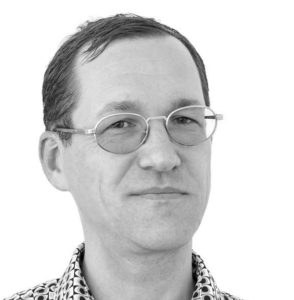 |
Georg Zotti
LBI ArchPro, Austria.

«Stellarium: simulation for research and outreach«
Over the past decade the free and open-source cross-platform desktop planetarium program Stellarium has gained not only most of the computational accuracy requirements for today’s amateur astronomers, but also unique capabilities for specialized applications in cultural astronomy research and astronomical outreach. A 3D rendering module can put virtual reconstructions of human-made monuments in their surrounding landscape under the day and night skies of their respective epochs, so that the user can investigate and experience the potential connection of architecture, landscape, light and shadow, and the sky. It also played a key role in an exhibition about Stonehenge in Austria.
Exchangeable “skycultures” allow the presentation of constellation patterns and mythological figures of non-Western cultures. Stellarium’s multi-language support allows community-driven translation of the whole program, which predestines its use in education also in minority languages.
Stellarium is developed by a very small core team, but is open to external contributions. Most notably we invite well-researched skycultures, for which some capabilities may also need further development.
|
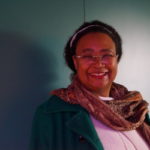 |
Jarita Holbrook
Science, Technology and Innovation Studies, University of Edinburgh, Scotlan, UK.

«ASTROMOVES: Astrophysics, Diversity, Mobility»
The US astronomy/astrophysics community comes together to create a decadal report that summarizes grant funding priorities, observatory & instrumental priorities as well as community accomplishments and community goals such as increasing the number of women and the number of people from underrepresented groups. In the 2010 US National Academies Decadal Survey (National Research Council, 2010) of Astronomy, it was suggested that having to move so frequently which is a career necessity may be unattractive to people wanting to start a family, especially impacting women. Whether in the USA or Europe as postdocs, astrophysicists will relocate every two to three years, until they secure a permanent position or leave research altogether. Astrophysicists do perceive working abroad as important and positive for their careers (Parenti, 2002) however, it was found that the men at equal rank had not had to spend as much time abroad to further their careers (J. Fohlmeister & Helling, 2012). By implication, women need to work abroad longer or have more positions abroad to achieve the same rank as men. Astrophysicists living in the United Kingdom prefer to work in their country of origin, but many did not do so because of worse working conditions or difficultly finding a job for their spouse (Janine Fohlmeister & Helling, 2014). In sum, moving is necessary for a career in astrophysics, and even more necessary for women, but astrophysicists prefer not to move as frequently as needed to maintain a research career. To gather more data on these issues and to broaden the discourse beyond male & female to include the gender diverse as well as to include other forms of diversity, I designed the ASTROMOVES project which is funded through a Marie Curie Individual Fellowship. Though slowed down by COVID-19, several interviews have been conducted and the preliminary results will be presented. Of interests are two unexplored areas that arose from the interviews: 1. The role, resources and impact of locally funded unemployment. And 2. The consideration of local cost of living as part of career decision making.
|
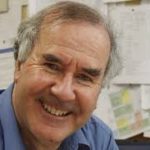 |
John Hearnshaw
Canterbury University, New Zealand.

«The IAU Strategic Plan 2020-2030, a blueprint for forging a new social revolution in astronomy and for using astronomy as a tool for building a progressive society«
I will discuss the second IAU Strategic Plan for the decade 2020-30 in the context of the overall evolution of the IAU in recent past decades. This article will show how the IAU has evolved dramatically since WW2. It is hardly recognizable in terms of its original organization and goals of a century ago. What was once an inward-looking body engaged purely with the procedures of astronomical research is now a dynamic and outward-looking organization, interacting with people, especially students and the public.
A large part of this success must be attributed to the IAU’s unique body of individual members, whose number has grown strongly in recent decades. It is the individual members, especially through the Commissions and Working Groups, who have promoted these enormous changes in the outlook of the Union. This is a model for other scientific unions to follow, and especially for the work to promote the careers of women in science, for promoting the careers of young astronomers, for bringing students into astronomy or into science in general, for helping people with disabilities to have careers in astronomy, for engaging with the public, and for helping to develop astronomy and science in developing countries.
Looking to the future, the IAU’s new Strategic Plan for the years 2020 to 2030 (van Dishoeck & Elmegreen, 2018) has five major goals for the coming decade:
1. The IAU leads the worldwide coordination of astronomy and the fostering of communication and dissemination of astronomical knowledge among professional astronomers.
2. The IAU promotes the inclusive advancement of the field of astronomy in every country.
3. The IAU promotes the use of astronomy as a tool for development in every country.
4. The IAU engages the public in astronomy through access to astronomical information and communication of the science of astronomy.
5. The IAU stimulates the use of astronomy for teaching and education at school level.
Future developments will also be engaging with the large number of amateur astronomers and helping to promote astro-tourism, which is perhaps the new frontier now growing rapidly around the world. The Strategic Plan is a blueprint for forging a social revolution in astronomy and for using astronomy as a tool for building a progressive society.
|
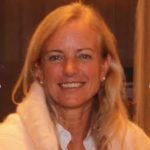 |
Karen Hallberg
CAB-IB, Argentina.

«Women in science: the need for a global cultural change«
In science, according to UNESCO, worldwide, less than 30% of scientists are women. And this includes all sciences, natural, biomedical, exact and social sciences. If we consider STEM alone, the numbers are even lower. Women are not only a minority, but they are far from being protagonists in decision making and policy shaping. Few exceptions confirm the rule and men continue to dominate the field.
We are witnessing an important moment in history concerning women’s rights and empowerment, in all fields. However, although the situation has improved somewhat compared to around half a century ago thanks to many proactive actions, there is still a very long way to go.
Of course, there have been women that have challenged the barriers and have made history in science. I’d like to pay tribute to some of those women who have paved the way for other women to follow and share some thoughts on this important issue.
|
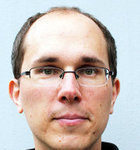 |
Markus Pössel
Director, OAE.

«The IAU Office of Astronomy for Education«
Since January 2020, the International Astronomical Union has an Office of Astronomy for Education (OAE). The OAE, which joins the previously existing IAU Offices for Astronomy for Development (OAD), Astronomy Outreach (OAO) and Young Astronomers (OYA) is hosted at Haus der Astronomie, a center for astronomy education and outreach operated by the Max Planck Society in Heidelberg, Germany. The talk outlines the mission of the OAE, the current state of the office and its collaborative structure – notably the National Astronomy Education Coordinator Teams (NAEC Teams), and the OAE Centers and OAE Nodes, the activities that have already started and those that are planned for the future.
|
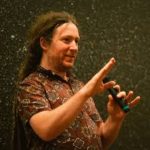 |
Michael Firzgerald
Edith Cowan Inst. for Educ. Research, Australia.

«A review of astronomy education research from 1904 to 2019”
In this talk I will provide a comprehensive overview of astronomy education from 1904 to 2019. Our team has trawled the literature from the earliest moments of the 20th Century until now leading to over 2000 individual journal articles, conference proceedings articles, books and postgraduate thesis, the vast majority being published from 1990 onwards. The talk will explore the interesting patterns found by construct (e.g. content knowledge, spatial reasoning, nature of science, attitudes), geographical location, target group and various other dimensions such as methodology, research setting and others. The talk will identify those areas that have been sufficiently researched as well as neglected areas while suggesting fertile areas of the research field that require more study.
|
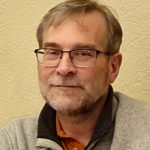 |
Néstor Camino
UNSJB, Argentina.

«The earthly gaze upon the sky: a single worldview or many worldviews in dialogue?”
A discussion on the role of the Teaching of Astronomy in the construction of a current cosmovision will be presented, analyzing in particular the epistemological, social and ethical characteristics that would demand that it be respectful of the cultural and social diversity that characterizes contemporary civilization, as opposed to the imperialistic, totalitarian, homogenizing, scientificist and almost inhuman conception, dominant in some institutional proposals that are in development in different parts of the world.
|
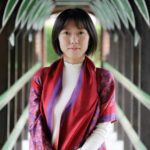 |
Shanshan LI
National Astronomical Observatories, China.

«The vigorous development of data driven astronomy education and public outreach (DAEPO)«
Astronomy education and public outreach(EPO) is one of the important part, or maybe the fundamental of the development of astronomy research and even the science research. During the past few years, as the develop of Internet and the policy changes, the environment of the science EPO showing the booming trends. Not just the school and science museum willing to put more resources in EPO activates, processional astronomers join in and bring a great amount of latest astronomy content. Among all the activates and projects of astronomy EPO, DAEPO related projects occupy very important position. Real data and big data technology accelerated the cooperation between professional astronomy team, enterprise and the astronomy educators. DAEPO has helped form a good atmosphere for astronomical EPO and is going to keep booming the development of it. The background, best cases and prospective development of DAEPO will be include in this talk.
|
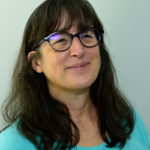 |
Susana Deustua
STScI – President of IAU-Div C, USA.

«IAU Strategic Plan for Education«
The IAU Strategic Plan 2020-2030 identifies five goals to guide the Union’s activities through this decade: to lead the global coordination of professional astronomy, to promote inclusive advancement of astronomy, to promote astronomy as a tool for development, to promote public engagement in astronomy, and, to stimulate using astronomy for primary and secondary education. Education permeates through all these goals – professional development, informal education and formal education for the very young through to the PhD level. For the IAU’s Division C, Education, Outreach and Heritage, the plan provides the foundation for supporting teachers worldwide who use astronomy as a tool for teaching science, the humanities and the arts, to promote astronomy education research, to engage life-long learners, and to engage everyone with our collective history and heritage to understand the Universe. I will describe Division C’s remit, where we are now in this 3rd decade of the 21st century.
|
Conferences for the Public
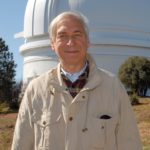 |
Jay Pasachoff
Williams College-Hopkins Observatory, Williamstown, Massachusetts, USA, and Chair, IAU Working Group on Solar Eclipses.
Conference in English.

«This Solar Eclipse and Others«
I will discuss the science and the magnificence of observing total solar eclipses, most recently the July 2, 2019, total solar eclipse that my team observed from Chile. Among the scientific problems being addressed at recent eclipses are motions in the solar corona, possible precursors to Sun-Earth space-weather events, the spectra from iron and argon that are so ionized that they have lost about half their normal electrons, the distribution of million+ kelvin gas in the corona, and how the corona is heated to a million kelvins or more. For outreach, I will discuss how to persuade the general public to travel into the zone of totality, and how to safely observe partial phases. I will discuss the 2017 and 2018 annular solar eclipses that I observed from Buenos Aires and Patagonia, Argentina, respectively, and the 2019 annular solar eclipses observed from India and elsewhere in Africa and Asia. I will prepare the scene for the December 14, total solar eclipse that my scientific team will observe from Las Grutas on the Atlantic Coast and for which the meeting will have an excursion.
Acknowledgments: JMP’s eclipse research receives major support from grant AGS-903500 from the Solar Terrestrial Program, Atmospheric and Geospace Sciences Division, U.S. National Science Foundation.
|
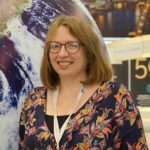 |
Andrea Sosa Oyarzabal
Univ. de la Rep. – Centro Univ. Reg. del Este, Uruguay.
Conference in Spanish.

«Let’s turn off the lights and turn on the night: to the rescue of starlight in an era of artificial lighting«
Our ancestors contemplated an inspiring night sky of science, philosophy, art … today, an estimated one third of the world’s population – including millions of children – have never seen the Milky Way. The progressive degradation of the quality of the night sky must be considered as the fundamental loss of a scientific, cultural and environmental heritage of humanity. Light pollution is caused by the excessive or inappropriate use of artificial light, and constitutes one of the most widespread forms of environmental pollution. Although the concern about light pollution arose in the astronomical field, due to the loss of sky quality that damages observations, studies have been carried out since the beginning of this century that demonstrate how light pollution also affects our health, a wildlife and ecosystems. These problems, added to the waste of energy resources, show the importance of properly regulating artificial lighting at all levels.
Astronomy is one of the sciences that most uses and promotes the development of space exploration and new technologies. Paradoxically, today some of these technological developments are turning against him: sources of light pollution in the night sky must now be added to the «mega constellations» of satellites. These constitute large conglomerates of telecommunication satellites in low-altitude orbits that would start operating at the end of 2020, and whose brightness and frequency will put astronomical observations from the Earth’s surface in great compromise.
In this talk, we will summarize the most relevant aspects of light pollution, and the different global initiatives that are being developed to preserve the darkness of the night sky.
|
 |
Juan Antonio Belmonte
Research Professor Instituto de Astrofísica de Canarias.
Conference in Spanish.

«Astronomy, Landscape and World Heritage: from Gran Canaria to Chankillo, passing through Menorca«
In Honolulu, in 2015, the IAU created the new Commission CC4, World Heritage and Astronomy; as a finishing touch to the initiative: Astronomy and World Heritage; promoted and led by UNESCO and the IAU itself as a result of the International Year of Astronomy 2009.
Astronomy, or the observation of the sky, in particular through the intimate relationship between landscape and clouds, has always played a fundamental role in enriching the cultural heritage of the peoples of the Earth. This relationship could be manifested, for practical purposes, in the control of time, through the creation of a calendar, or for symbolic purposes, where there is an intimate relationship with metaphysics and a certain connection with power. We must wait for the Renaissance so that the scientific character of astronomy was already decisive, although there were small scraps of hope in the Hellenistic period.
This relationship with culture was reflected in the world of ideas, and as such in texts since ancient Sumeria, but it was also reflected in the art of almost all civilizations that have been in the world. Rock art and architecture are two of the most beautiful manifestations of this interaction, as a true reflection of the culture that created them.
World Heritage sites such as Easter Island or the pyramids and temples of ancient Egypt are paradigmatic, although this astronomical heritage is not part of that recognition. Stonehenge was the exception.
However, in the last decade initiatives have been promoted so that certain places on the planet are recognized as World Heritage thanks, among other factors, to astronomy and the relationship between landscape and skyscape. We are going to visit three of them in more detail, which I know well: a cultural landscape of the Amazigh culture on the peaks of the island of Gran Canaria, an exceptional and unique monument of the Andean cultures on the Peruvian coast: Chankillo, and a well series of the Cyclopean tradition in the Mediterranean, the Talayotic Menorca. Each of them is a mirror of the worldview of its builders.
|
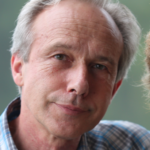 |
NiKos Prantzos
Institut d’Astrophysique de Paris, France.
Conference in English.

«The quest for extraterrestral intelligence and the Fermi paradox«
The issue for extraterrestrial intelligent life is one of the most hotly debated topics since ancient times. In the past 60 years or so, the debate was largely shaped by the ‘Drake equation’ and the ‘Fermi paradox’. The former was proposed by Frank Drake in 1961 and became ever since the key quantitative tool to evaluate the number of extraterrestrial civilizations in the Galaxy today. The latter was formulated a decade earlier by Enrico Fermi, but it remained virtually unknown until 1975, when it was independently re-discovered twice (Hart 1975, Viewing 1975). In a concise form (‘where are they?’), it opposes a healthy skepticism to the optimistic views on ETI: if there are many of them, why do not we see any evidence of their presence on Earth or in the solar system?
I will present an overview of the history of the debate on extraterrestrial intelligence, as well as some developments on the quantitative implications of the Drake formula, adopting recent results of the tatistics of extra-solar planets. I will also present a recent original analysis of the Fermi paradox, formulated for the first time in terms of that formula.
|
|